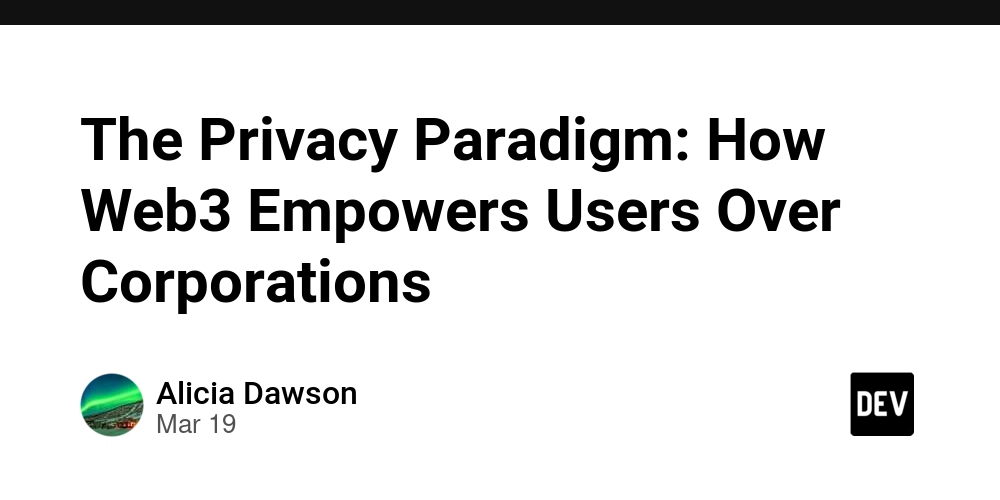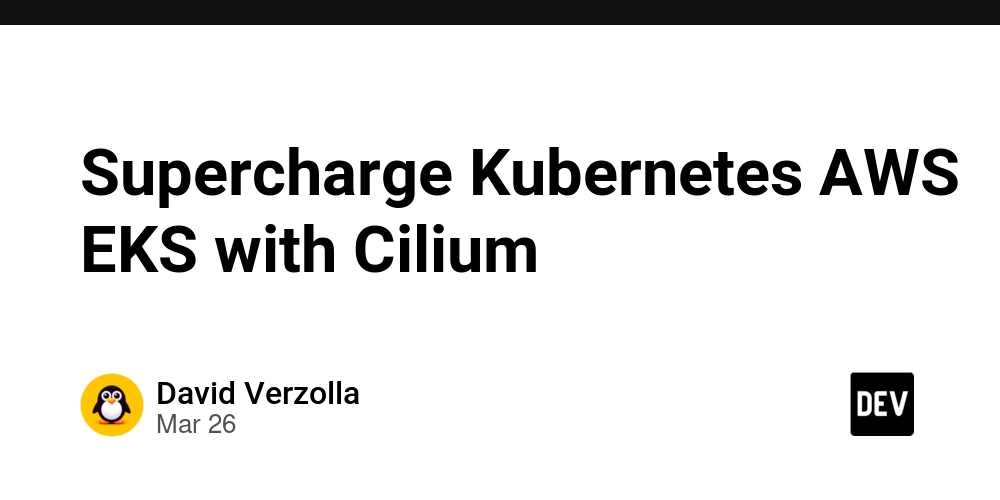The Privacy Paradigm: How Web3 Empowers Users Over Corporations
The internet has undergone a transformative evolution, shifting from Web1 (static web pages) to Web2 (interactive and centralized platforms) and now towards Web3—a decentralized ecosystem promising greater privacy and user control. In the current digital landscape, corporations dominate data collection, often exploiting user information for profit. However, Web3 introduces a paradigm shift, empowering users with data ownership, transparency, and enhanced privacy. This article explores how Web3 is redefining privacy, diminishing corporate control, and creating a more user-centric internet. The Privacy Issues of Web2 Web2, characterized by platforms like Google, Facebook, and Amazon, relies heavily on centralized systems where corporations control vast amounts of user data. This model presents several privacy concerns: Data Exploitation: Tech giants monetize user data through targeted advertising, often without explicit consent. Security Risks: Centralized databases are prime targets for cyberattacks, leading to frequent data breaches. Lack of Transparency: Users have limited visibility into how their data is collected, stored, and shared. Censorship and Control: Corporations hold the power to censor content and restrict access to platforms, impacting freedom of expression. Web3 seeks to address these concerns by leveraging blockchain technology, decentralized storage, and cryptographic security measures. How Web3 Enhances Privacy and User Control 1. Decentralization: Eliminating Corporate Gatekeepers Unlike Web2, which relies on centralized servers, Web3 operates on blockchain networks and decentralized protocols. This removes intermediaries, ensuring that data is not stored in a single, vulnerable location. Decentralization enhances privacy by: Reducing corporate control over personal information. Preventing unauthorized access and data manipulation. Enabling peer-to-peer transactions without reliance on third parties. 2. Self-Sovereign Identity: Users Own Their Data Web3 introduces self-sovereign identity (SSI), allowing users to control their digital identities rather than relying on third-party platforms. Key aspects of SSI include: Decentralized Identifiers (DIDs): Unique, verifiable digital identities independent of centralized entities. Zero-Knowledge Proofs (ZKPs): A cryptographic method that enables users to verify information without revealing sensitive data. Blockchain-Based Authentication: Users can log in to services without traditional usernames and passwords, reducing exposure to data leaks. 3. Smart Contracts: Enhancing Transparency and Security Smart contracts are self-executing agreements stored on the blockchain. They automate transactions without intermediaries, ensuring: Tamper-Proof Operations: Once deployed, smart contracts cannot be altered, reducing the risk of manipulation. Privacy-Focused Transactions: Users can engage in financial or data-related transactions without exposing personal details. Trustless Interactions: Parties can conduct business without needing to trust a central authority. 4. Decentralized Storage Solutions: Protecting Personal Data Web3’s decentralized storage and identity solutions also extend to academic support services, including university assignment help. By leveraging blockchain-based platforms, students can securely access study materials, collaborate on assignments without third-party interference, and protect their academic data from unauthorized access. This ensures academic integrity while providing a transparent and reliable framework for educational assistance. Traditional cloud storage services, such as Google Drive and Dropbox, store user data on centralized servers, making them vulnerable to breaches. Web3 utilizes decentralized storage solutions like IPFS (InterPlanetary File System) and Arweave, which: Distribute data across multiple nodes, eliminating single points of failure. Ensure data immutability and censorship resistance. Allow users to control access permissions and encryption. 5. Privacy-Preserving Cryptocurrencies and Transactions Cryptocurrencies like Bitcoin and Ethereum have introduced financial decentralization, but privacy-focused cryptocurrencies such as Monero and Zcash take it a step further by: Concealing transaction details, including sender, receiver, and amount. Using advanced cryptographic techniques like ring signatures and zk-SNARKs. Preventing corporations from tracking financial activities. 6. Decentralized Autonomous Organizations (DAOs): Community Governance Web3 replaces traditional corporate governance with DAOs—blockchain-based entities governed by smart contracts and community voting. This ensures: Transparent Decision-Making: Users collectively participate in platform rules and changes. Privacy Protection: No central authority dictates data policies or monetization strategies. User-First Approa

The internet has undergone a transformative evolution, shifting from Web1 (static web pages) to Web2 (interactive and centralized platforms) and now towards Web3—a decentralized ecosystem promising greater privacy and user control. In the current digital landscape, corporations dominate data collection, often exploiting user information for profit. However, Web3 introduces a paradigm shift, empowering users with data ownership, transparency, and enhanced privacy. This article explores how Web3 is redefining privacy, diminishing corporate control, and creating a more user-centric internet.
The Privacy Issues of Web2
Web2, characterized by platforms like Google, Facebook, and Amazon, relies heavily on centralized systems where corporations control vast amounts of user data. This model presents several privacy concerns:
Data Exploitation: Tech giants monetize user data through targeted advertising, often without explicit consent.
Security Risks: Centralized databases are prime targets for cyberattacks, leading to frequent data breaches.
Lack of Transparency: Users have limited visibility into how their data is collected, stored, and shared.
Censorship and Control: Corporations hold the power to censor content and restrict access to platforms, impacting freedom of expression.
Web3 seeks to address these concerns by leveraging blockchain technology, decentralized storage, and cryptographic security measures.
How Web3 Enhances Privacy and User Control
1. Decentralization: Eliminating Corporate Gatekeepers
Unlike Web2, which relies on centralized servers, Web3 operates on blockchain networks and decentralized protocols. This removes intermediaries, ensuring that data is not stored in a single, vulnerable location. Decentralization enhances privacy by:
Reducing corporate control over personal information.
Preventing unauthorized access and data manipulation.
Enabling peer-to-peer transactions without reliance on third parties.
2. Self-Sovereign Identity: Users Own Their Data
Web3 introduces self-sovereign identity (SSI), allowing users to control their digital identities rather than relying on third-party platforms. Key aspects of SSI include:
Decentralized Identifiers (DIDs): Unique, verifiable digital identities independent of centralized entities.
Zero-Knowledge Proofs (ZKPs): A cryptographic method that enables users to verify information without revealing sensitive data.
Blockchain-Based Authentication: Users can log in to services without traditional usernames and passwords, reducing exposure to data leaks.
3. Smart Contracts: Enhancing Transparency and Security
Smart contracts are self-executing agreements stored on the blockchain. They automate transactions without intermediaries, ensuring:
Tamper-Proof Operations: Once deployed, smart contracts cannot be altered, reducing the risk of manipulation.
Privacy-Focused Transactions: Users can engage in financial or data-related transactions without exposing personal details.
Trustless Interactions: Parties can conduct business without needing to trust a central authority.
4. Decentralized Storage Solutions: Protecting Personal Data
Web3’s decentralized storage and identity solutions also extend to academic support services, including university assignment help. By leveraging blockchain-based platforms, students can securely access study materials, collaborate on assignments without third-party interference, and protect their academic data from unauthorized access. This ensures academic integrity while providing a transparent and reliable framework for educational assistance. Traditional cloud storage services, such as Google Drive and Dropbox, store user data on centralized servers, making them vulnerable to breaches. Web3 utilizes decentralized storage solutions like IPFS (InterPlanetary File System) and Arweave, which:
Distribute data across multiple nodes, eliminating single points of failure.
Ensure data immutability and censorship resistance.
Allow users to control access permissions and encryption.
5. Privacy-Preserving Cryptocurrencies and Transactions
Cryptocurrencies like Bitcoin and Ethereum have introduced financial decentralization, but privacy-focused cryptocurrencies such as Monero and Zcash take it a step further by:
Concealing transaction details, including sender, receiver, and amount.
Using advanced cryptographic techniques like ring signatures and zk-SNARKs.
Preventing corporations from tracking financial activities.
6. Decentralized Autonomous Organizations (DAOs): Community Governance
Web3 replaces traditional corporate governance with DAOs—blockchain-based entities governed by smart contracts and community voting. This ensures:
Transparent Decision-Making: Users collectively participate in platform rules and changes.
Privacy Protection: No central authority dictates data policies or monetization strategies.
User-First Approach: Governance prioritizes community interests over corporate profits.
Challenges and Limitations of Web3 Privacy
While Web3 offers significant privacy advantages, it also faces challenges that must be addressed for widespread adoption:
Scalability Issues: Blockchain networks often struggle with high transaction costs and slow processing times.
User Experience Complexity: Managing private keys, decentralized applications (dApps), and cryptographic tools can be challenging for non-technical users.
Regulatory Uncertainty: Governments are still formulating policies on decentralized technologies, creating legal gray areas.
Data Immutability Concerns: While immutability enhances security, it also means that mistakenly uploaded private data cannot be easily removed.
The Future of Privacy in a Web3 World
Despite these challenges, Web3 is continuously evolving to enhance privacy and user control. Future advancements may include:
More Scalable Blockchain Solutions: Layer 2 networks and sharding can improve transaction speeds and reduce costs.
Enhanced Privacy Protocols: Emerging cryptographic techniques like homomorphic encryption could provide even greater privacy protections.
Greater Interoperability: Seamless integration between Web3 and Web2 applications could drive mainstream adoption.
Conclusion
Web3 represents a fundamental shift in internet privacy, redistributing power from corporations to individuals. Through decentralization, self-sovereign identity, smart contracts, and privacy-preserving technologies, Web3 empowers users to take control of their data and online interactions. While challenges remain, the ongoing development of decentralized solutions signals a future where user privacy is prioritized over corporate profits. As Web3 continues to mature, it holds the potential to redefine digital freedom, making the internet a truly user-centric space.











































































































































































![[The AI Show Episode 142]: ChatGPT’s New Image Generator, Studio Ghibli Craze and Backlash, Gemini 2.5, OpenAI Academy, 4o Updates, Vibe Marketing & xAI Acquires X](https://www.marketingaiinstitute.com/hubfs/ep%20142%20cover.png)




























































































































![[DEALS] The Premium Learn to Code Certification Bundle (97% off) & Other Deals Up To 98% Off – Offers End Soon!](https://www.javacodegeeks.com/wp-content/uploads/2012/12/jcg-logo.jpg)


![From drop-out to software architect with Jason Lengstorf [Podcast #167]](https://cdn.hashnode.com/res/hashnode/image/upload/v1743796461357/f3d19cd7-e6f5-4d7c-8bfc-eb974bc8da68.png?#)








































































































.png?#)

































_Christophe_Coat_Alamy.jpg?#)
 (1).webp?#)





































































































![Apple Considers Delaying Smart Home Hub Until 2026 [Gurman]](https://www.iclarified.com/images/news/96946/96946/96946-640.jpg)
![iPhone 17 Pro Won't Feature Two-Toned Back [Gurman]](https://www.iclarified.com/images/news/96944/96944/96944-640.jpg)
![Tariffs Threaten Apple's $999 iPhone Price Point in the U.S. [Gurman]](https://www.iclarified.com/images/news/96943/96943/96943-640.jpg)




































































































































